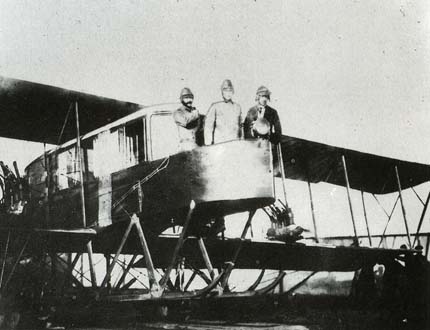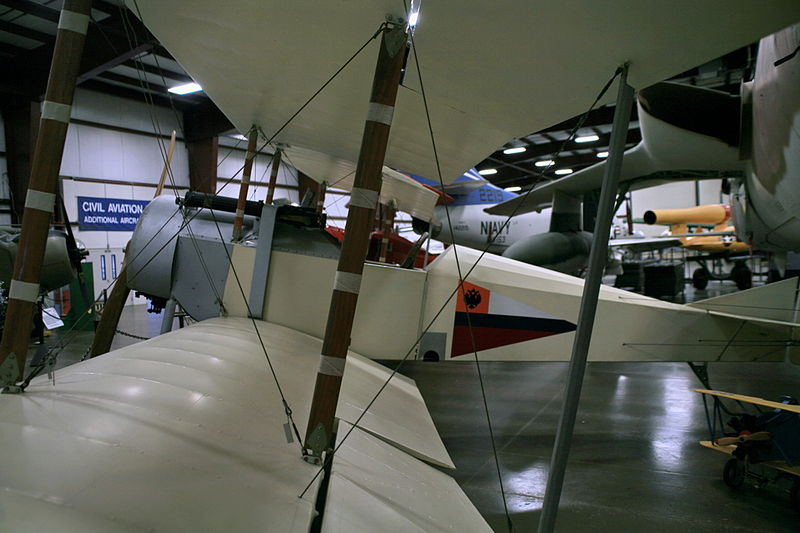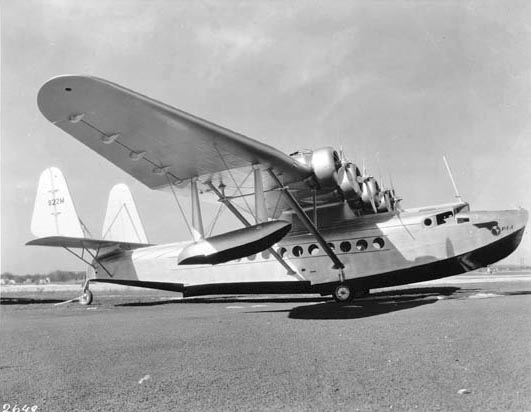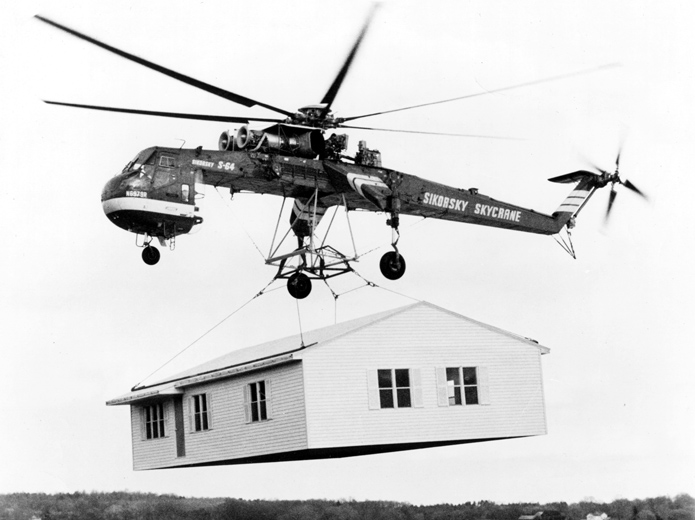<Back to Index>
- Aviation Pioneer Igor Ivanovich Sikorsky, 1889
- Writer Gustav Regler, 1898
- Chief of the German General Staff Helmuth Johann Ludwig von Moltke, 1848
PAGE SPONSOR
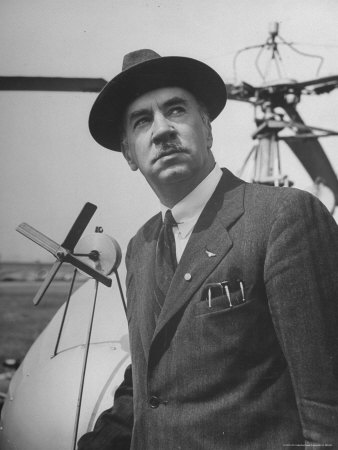
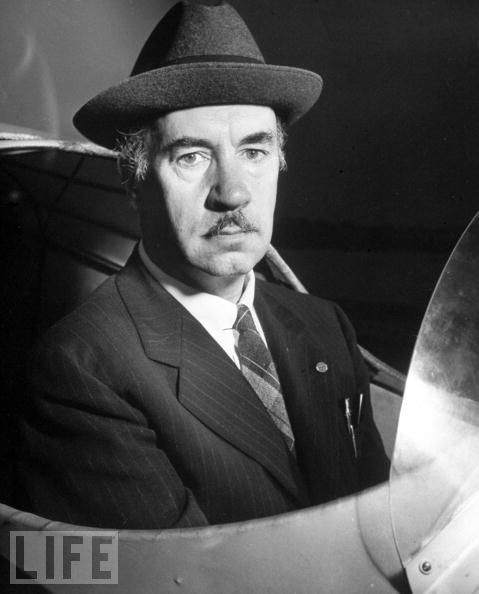
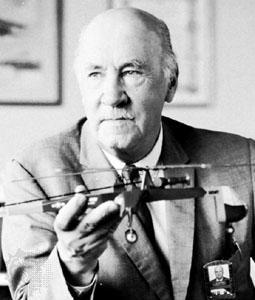
Igor Sikorsky (May 25, 1889 – October 26, 1972), born Igor Ivanovich Sikorsky (Russian:Игорь Иванович Сикорский, Ukrainian: Ігор Іванович Сікорський), was a Russian American pioneer of aviation in both helicopters and fixed wing aircraft. He designed and flew the world's first multi - engine fixed wing aircraft, the Russky Vityaz in 1913, and the first airliner, Ilya Muromets, in 1914.
After immigrating to the United States in 1919, Sikorsky founded the Sikorsky Aircraft Corporation in 1923, and developed the first of Pan American Airways' ocean conquering flying boats in the 1930s. In 1939 he designed and flew the Vought - Sikorsky VS-300, the first viable American helicopter, which pioneered the rotor configuration used by most helicopters today. Sikorsky would modify the design into the Sikorsky R-4, which became the world's first mass produced helicopter in 1942. Igor Sikorsky was born in Kiev, Russian Empire (present day Ukraine), as the youngest of five children. His father, Ivan Alexeevich Sikorsky, had a Russian and noble Polish (Polish: szlachta) family background. A professor of psychology, Ivan was the son and grandson of Russian Orthodox priests and held monarchist and Russian nationalist views. Igor Sikorsky's mother, Mariya Stefanovna Sikorskaya (née Temryuk - Cherkasova), was a physician who did not work professionally. While homeschooling young Igor, she gave him a great love for art, especially in the life and work of Leonardo da Vinci, and the stories of Jules Verne. In 1900, at age 11, he accompanied his father to Germany and through conversations with his father, became interested in natural sciences.
After returning home, Sikorsky began to experiment with model flying
machines, and by age 12, he had made a small rubber band - powered helicopter. Sikorsky began studying at the Saint Petersburg Imperial
Russian Naval Academy, in 1903, at the age of 14. In 1906, he
determined that his future lay in engineering, so he resigned from the
Academy, despite his satisfactory standing, and left the Russian Empire
to study in Paris. He returned to Russia in 1907, enrolling at the Mechanical College of the Kiev Polytechnic Institute.
After the academic year, Sikorsky again accompanied his father to
Germany in the summer of 1908, where he learned of the accomplishments of the Wright brothers' Flyer and Ferdinand von Zeppelin's dirigible. Sikorsky later said about this event: "Within twenty - four hours, I decided to change my life's work. I would study aviation."
With financial backing from his sister Olga, Sikorsky returned to Paris in 1909 to study aeronautics in the world renowned
Ecole des Techniques Aéronautiques et de Construction Automobile (ETACA)
engineering school and to purchase aircraft parts. At the time, Paris
was the center of the aviation world. Sikorsky would meet with aviation
pioneers, to ask them questions about aircraft and flying. In May 1909,
he returned to Russia and began designing his first helicopter, which
he began testing in July 1909. Despite his progress in solving
technical problems of control, Sikorsky realized that the aircraft
would never fly. He finally disassembled the aircraft in October 1909,
after he determined that he could learn nothing more from the design. Sikorsky
built the two - seat S-5, his first design not based on other European
aircraft. Flying this original aircraft, Sikorsky earned his pilot license; Fédération Aéronautique Internationale (FAI) license No. 64 issued by the Imperial Aero Club of Russia in 1911. During a demonstration of the S-5, the engine quit and Sikorsky was forced to
make a crash landing to avoid a wall. It was discovered that a mosquito in the gasoline had been drawn into the carburator,
starving the engine of fuel. The close call convinced Sikorsky of the
need for an aircraft that could continue flying if it lost an engine. His next aircraft, the S-6 held three passengers and was selected as the winner of the Moscow aircraft exhibition held by the Russian Army in February 1912. In early 1912, Igor Sikorsky became Chief Engineer of the aircraft division for the Russian Baltic Railroad Car Works (Russko - Baltiisky Vagonny Zavod or R-BVZ) in Saint Petersburg. His work at R-BVZ included the construction the first four - engine airplane, the S-21 Russky Vityaz, which he called Le Grand. He also served as the test pilot for its first flight on 13 May 1913. In recognition for his accomplishment, he was awarded an honorary degree in engineering from Saint Petersburg Polytechnical Institute in 1914. Sikorsky took the experience from building the Russky Vityaz to develop the S-22 Ilya Muromets airliner. Due to outbreak of World War I, he redesigned as the world's first four - engined bomber, for which he was decorated with the Order of St. Vladimir. After World War I, Igor Sikorsky briefly became an engineer for the French forces in Russia, during the Russian Civil War. Seeing little opportunity for himself as an aircraft designer in war torn Europe, and particularly Russia, ravaged by the October Revolution and Civil War, he emigrated to the United States, arriving in New York on March 30, 1919.
In
the United States, Sikorsky first worked as a school teacher and a
lecturer, while looking for an opportunity to work in the aviation
industry. In 1932, he joined the faculty of the
University of Rhode Island to form an Aeronautical Engineering program and remained with the University until 1948. He also lectured at the University of Bridgeport. In 1923, Sikorsky formed the Sikorsky Manufacturing Company in Roosevelt, New York. He was helped by several former Russian military officers. Among Sikorsky's chief supporters was composer Sergei Rachmaninoff, who introduced himself by writing a check for US$ 5,000 (approximately $ 61,000 in 2007 dollars). Although
his prototype was damaged in its first test flight, Sikorsky persuaded
his reluctant backers to invest another $ 2,500. With the additional
funds, he produced the S-29, one of the first twin engine aircraft in America, with a capacity for 14 passengers and a speed of 115 mph. The
performance of the S-29, slow compared to military aircraft of 1918,
proved to be a "make or break" moment for Sikorsky's funding. In 1928, Sikorsky became a naturalized citizen of the United States. The Sikorsky Manufacturing Company moved to Stratford, Connecticut, in 1929. It became a part of United Aircraft and Transport (now United Technologies Corporation) in July of that year. The company manufactured flying boats, such as the S-42 "Clipper", used by Pan Am for trans - Atlantic flights. Meanwhile,
Sikorsky also continued his earlier work on vertical flight. On
February 14, 1929, he filed an application to patent a "direct lift"
amphibian aircraft which used compressed air to power a direct lift
"propeller" and two smaller propellers for thrust. On
June 27, 1931, Sikorsky filed for a patent for another "direct lift
aircraft", and was awarded patent #1,994,488 on 19 March 1935. His design plans eventually culminated in the first (tethered) flight of the Vought - Sikorsky VS-300 on
September 14, 1939, with the first free flight occurring eight months
later on May 24, 1940. Sikorsky's success with the VS-300 led to the R-4,
which became the world's first mass produced helicopter in 1942.
Sikorsky's final VS-300 rotor configuration, comprising a single main
rotor and a single antitorque tail rotor, has proven to be one of the
most popular helicopter configurations, being used in most helicopters
produced today.
Sikorsky
was married to Olga Fyodorovna Simkovitch in Russia. They were divorced
and Olga remained in Russia with their daughter as Sikorsky departed
ahead of the
October Revolution. In 1923, Sikorsky's sisters emigrated to the United States, bringing six-year old Tania with them. Sikorsky married Elisabeth Semion in 1924, in New York. Sikorsky and Elisabeth had four sons; Sergei, Nikolai, Igor Jr. and George. Sikorsky died at his home in Easton, Connecticut, on October 26, 1972, and was buried in Saint John the Baptist Greek Catholic Cemetery in Stratford. The Sikorsky Memorial Bridge, which carries the Merritt Parkway across the Housatonic River next
to the Sikorsky corporate headquarters, is named for him. Sikorsky has
been designated a Connecticut Aviation Pioneer by the Connecticut State
Legislature. The Sikorsky Aircraft Corporation in Stratford,
Connecticut, continues to the present day as one of the world's leading
helicopter manufacturers, and a nearby small airport has been named Sikorsky Memorial Airport. Sikorsky was inducted into the National Inventors Hall of Fame and the Junior Achievement U.S. Business Hall of Fame in 1987.
Sikorsky was a deeply religious
Russian Orthodox Christian and authored two religious and philosophical books (The Message of the Lord's Prayer and The Invisible Encounter). Summarizing his beliefs, in the latter he wrote:
